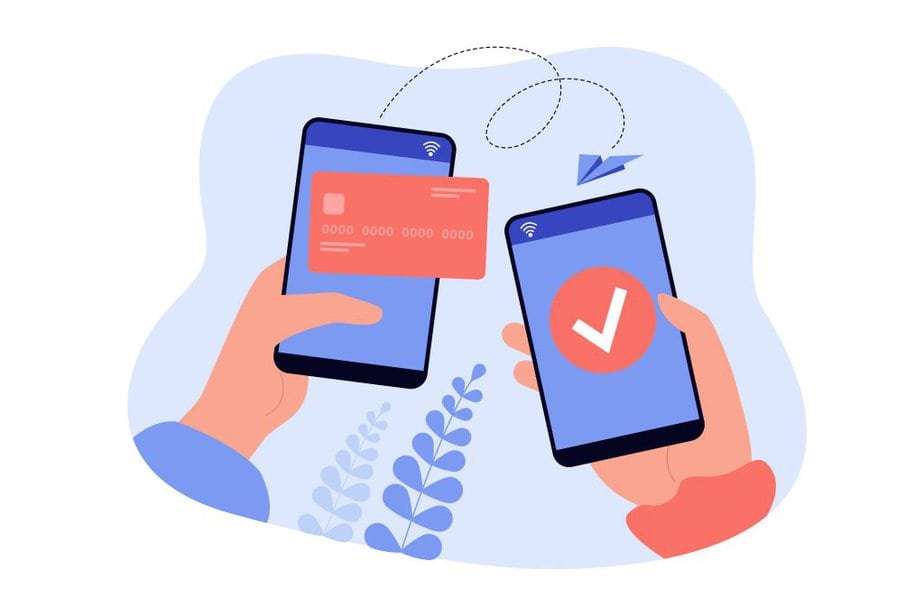Credit card debt can quickly become overwhelming, especially when high interest rates start piling up. If you currently struggle with credit card debt and want a short-term solution, this step-by-step guide will walk you through how to transfer your credit card balance.
To learn more about balance transfers and which factors to consider before going through with it, first read the following.
What Does It Mean To Transfer Your Credit Card Balance?
Transferring credit card balance involves consolidating your debt into one manageable payment by moving all your debts into one account with a lower interest rate. Put simply, you use a credit card with better rates to pay off another credit card’s debts.
This simplifies the process of paying off your debts by having it all in one place and decreases the fees you need to pay on your balance.
Factors To Consider Before Transferring Your Credit Card Balance
Before diving into the balance transfer process, it is crucial to consider a few factors. These are listed below.
- Evaluate your current credit card debt. Keep track (maybe via a spreadsheet) of outstanding balances, interest rates and promotional offers on your balance.
- Assess your credit score. A higher credit score will give you access to better balance transfer options, these include lower interest rates and longer promotional periods.
- Consider your payment habits. To transfer your balance, you need to commit to paying off your debt within the promotional period. If you tend to make late payments or carry a balance from month to month, a balance transfer may not be the best solution for you.
Once you’re certain you want to transfer your credit card balance, you can proceed by following the steps below.
Step 1: Assess Your Current Credit Card Debt
To begin the balance transfer process, gather all your credit card statements and make a list of the outstanding balances, interest rates, and monthly minimum payments. The goal is to gain a clear picture of your current debt and help you determine how much you need to transfer to a new credit card.
Once you know how much you need to transfer and from where you can calculate how much you could save with a balance transfer but plugging in different interest rates and promotional periods. Aim for the option with the most savings. If you’re not sure how to do this, there are online calculators or spreadsheets to make this easier.
Step 2: Research Balance Transfer Credit Card Options
With a clear understanding of your current debt, it’s time to research balance transfer credit card options. Look for credit cards that offer favourable terms, such as low or 0% introductory interest rates, long promotional periods, and minimal balance transfer fees.
A few additional things to consider include:
- Features and rewards programs. You may want to choose a card that aligns with your lifestyle and financial goals.
- Credit Card issuer reputation. Read customer reviews and make sure the credit card you transfer to has a reliable track record.
To find out about some of the best balance transfer credit cards in Canada, consider reading our online guide.
Step 3: Compare Balance Transfer Fees And Interest Rates
When comparing balance transfer credit cards, it is essential to consider both the balance transfer fees and the interest rates. Most balance transfer credit cards charge a fee for transferring your balance, typically ranging from 3% to 5% of the transferred amount. While a lower fee is generally preferable, it’s crucial to weigh it against the potential savings from a lower interest rate.
Speaking of interest rates, look for a credit card with a low or 0% introductory rate. This promotional rate is usually valid for a specified period, typically between 6 and 18 months. The longer the promotional period, the more time you have to pay off your debt without accruing additional interest charges.
Step 4: Apply For A Balance Transfer Credit Card
Once you’ve decided on the right credit card, check to make sure of the following things:
- – You meet the card’s eligibility criteria.
- – You have all the documents ready (proof of income, ID, credit card
- statements etc.).
- – You know what impact the transfer will have on your credit report (it may
- lower it).
Step 5: Transfer Your Credit Card Balance
After receiving approval for your balance transfer credit card, it’s time to transfer your credit card balance. This involves contacting your new credit card issuer and providing them with information such as:
- – Your old credit card account number.
- – The amount being transferred.
The process may vary depending on the credit card issuer, but most provide online or phone options for balance transfers. It is crucial to follow any instructions provided by the credit card issuer to ensure a smooth transfer.
Step 6: Pay Off Your Balance During The Promotional Period
Once your credit card balance has been transferred, it’s essential to create a repayment plan to pay off your debt during the promotional period. Take advantage of the lower or 0% interest rate to make significant progress on your debt without accruing additional finance charges.
Remember to set a realistic budget and contribute a portion of your monthly income to paying off your balance. To make this easier, consider setting up automatic payments to avoid late fees or missed payments.
Tips to Maximize the Benefits of a Credit Card Balance Transfer
To ensure you pay off your debts successfully, keep these tips in mind:
- Pay attention to the promotional period. Make sure your payment plan does not extend beyond this period, since you will then pay higher interest on the debt.
- Avoid new charges. While you’re paying off your debt, avoid using the card for new payments. This makes it more difficult to stay on track with your payment plan.
- Stick to your repayment plan. Stay committed to your budget and repayment plan to ensure you meet your financial goals.
- Keep up good credit habits. Make your payments on time and keep credit utilization low.
Common Mistakes to Avoid When Transferring Credit Card Balances
While credit card balance transfers can be beneficial, there are some common mistakes to avoid:
- Ignoring the fine print: Read and understand the terms and conditions of the balance transfer credit card, including any fees, penalties, or changes in interest rates.
- Missing payments: Paying late or missing payments can result in penalties and potentially void the promotional period, causing your interest rates to skyrocket.
- Closing old credit cards: Closing your old credit cards after transferring the balance can negatively impact your credit utilization ratio and credit history.
- Overspending: Avoid the temptation to overspend once you have transferred your balance.
Conclusion: Is a Credit Card Balance Transfer Right for You?
Transferring your credit card balance can help you get out of debt and save money on interest charges. However, before considering it, carefully assess your financial situation and do your research. You need to ensure that you can pay off your transferred debt within the promotional period, or you may be stuck with higher interest rates and more debt than you began with. Therefore, it’s vital to stick to your repayment plan.
Disclaimer: This article offers a step-by-step introduction and guidelines on how to transfer your credit card balance but should not be considered financial advice. Consult a professional financial advisor before making any important decisions regarding your credit card balance.






